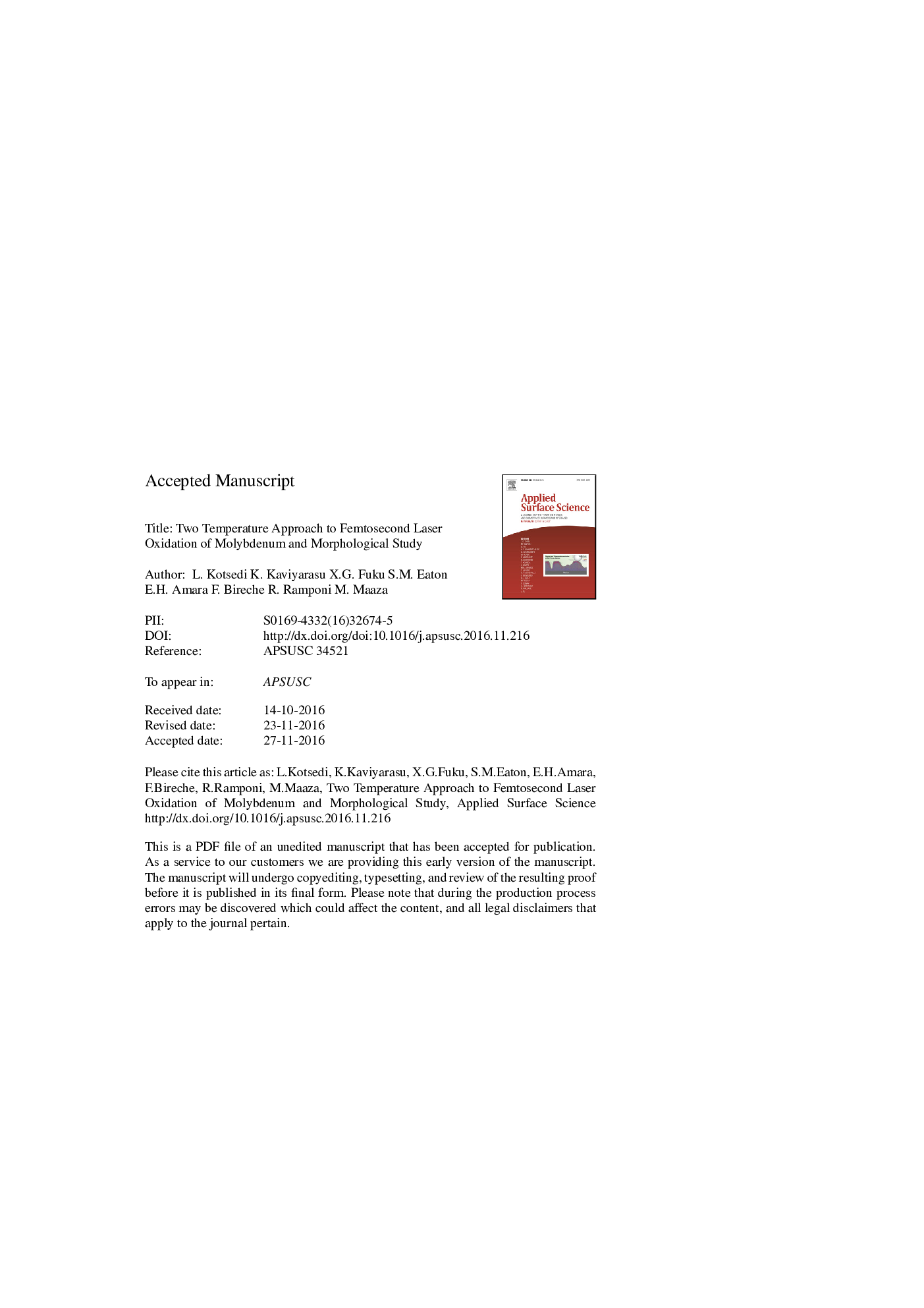| Article ID | Journal | Published Year | Pages | File Type |
|---|---|---|---|---|
| 5347863 | Applied Surface Science | 2017 | 21 Pages |
Abstract
The two-temperature model was used to gain insight into the thermal evolution of the hot electrons and the crystal lattice of the molybdenum thin coating during femtosecond laser treatment. The heat from the laser raised the bulk temperature of the sample through heat transfer from the hot electron to the crystal lattice of the material, which then led to the melting of the top layer of the film. This process resulted in the hot melt reacting ambient oxygen, which in turn oxidized the surface of molybdenum coating. The topological study and morphology of the oxidized film was conducted using high-resolution scanning electron microscope, with micrographs taken in both the cross-sectional geometry and normal incidence to the electron beam. The molybdenum oxide nanorods were clearly observed and the x-ray diffraction patterns showed the diffraction peaks due to molybdenum oxide.
Related Topics
Physical Sciences and Engineering
Chemistry
Physical and Theoretical Chemistry
Authors
L. Kotsedi, K. Kaviyarasu, X.G. Fuku, S.M. Eaton, E.H. Amara, F. Bireche, R. Ramponi, M. Maaza,
